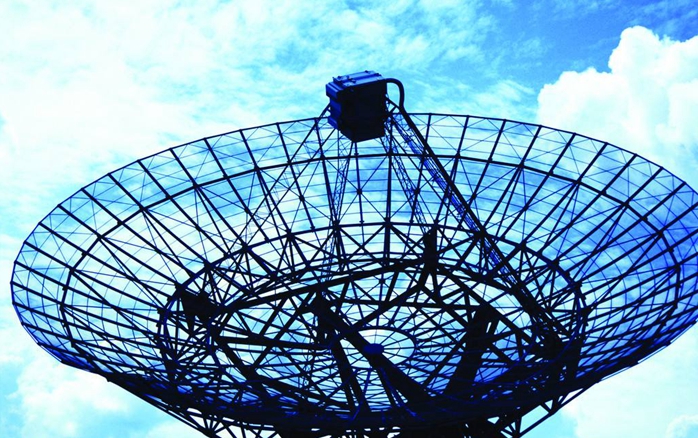Products Category
- FM Transmitter
- 0-50w 50w-1000w 2kw-10kw 10kw+
- TV Transmitter
- 0-50w 50-1kw 2kw-10kw
- FM Antenna
- TV Antenna
- Antenna Accessory
- Cable Connector Power Splitter Dummy Load
- RF Transistor
- Power Supply
- Audio Equipments
- DTV Front End Equipment
- Link System
- STL system Microwave Link system
- FM Radio
- Power Meter
- Other Products
- Special for Coronavirus
Products Tags
Fmuser Sites
- es.fmuser.net
- it.fmuser.net
- fr.fmuser.net
- de.fmuser.net
- af.fmuser.net ->Afrikaans
- sq.fmuser.net ->Albanian
- ar.fmuser.net ->Arabic
- hy.fmuser.net ->Armenian
- az.fmuser.net ->Azerbaijani
- eu.fmuser.net ->Basque
- be.fmuser.net ->Belarusian
- bg.fmuser.net ->Bulgarian
- ca.fmuser.net ->Catalan
- zh-CN.fmuser.net ->Chinese (Simplified)
- zh-TW.fmuser.net ->Chinese (Traditional)
- hr.fmuser.net ->Croatian
- cs.fmuser.net ->Czech
- da.fmuser.net ->Danish
- nl.fmuser.net ->Dutch
- et.fmuser.net ->Estonian
- tl.fmuser.net ->Filipino
- fi.fmuser.net ->Finnish
- fr.fmuser.net ->French
- gl.fmuser.net ->Galician
- ka.fmuser.net ->Georgian
- de.fmuser.net ->German
- el.fmuser.net ->Greek
- ht.fmuser.net ->Haitian Creole
- iw.fmuser.net ->Hebrew
- hi.fmuser.net ->Hindi
- hu.fmuser.net ->Hungarian
- is.fmuser.net ->Icelandic
- id.fmuser.net ->Indonesian
- ga.fmuser.net ->Irish
- it.fmuser.net ->Italian
- ja.fmuser.net ->Japanese
- ko.fmuser.net ->Korean
- lv.fmuser.net ->Latvian
- lt.fmuser.net ->Lithuanian
- mk.fmuser.net ->Macedonian
- ms.fmuser.net ->Malay
- mt.fmuser.net ->Maltese
- no.fmuser.net ->Norwegian
- fa.fmuser.net ->Persian
- pl.fmuser.net ->Polish
- pt.fmuser.net ->Portuguese
- ro.fmuser.net ->Romanian
- ru.fmuser.net ->Russian
- sr.fmuser.net ->Serbian
- sk.fmuser.net ->Slovak
- sl.fmuser.net ->Slovenian
- es.fmuser.net ->Spanish
- sw.fmuser.net ->Swahili
- sv.fmuser.net ->Swedish
- th.fmuser.net ->Thai
- tr.fmuser.net ->Turkish
- uk.fmuser.net ->Ukrainian
- ur.fmuser.net ->Urdu
- vi.fmuser.net ->Vietnamese
- cy.fmuser.net ->Welsh
- yi.fmuser.net ->Yiddish
How to Calculate Decibels of Different Types?
The dB scale is always about a ratio, so how to calculate decibels of different types? It all depends on the different points of reference (0 dB mark). dBm was all about power and had the reference point measured in watts. The problem is that many of the equipment used in the audio world, are not that concerned with the power levels but are very sensitive to voltage levels. For this reason, a new unit of measuring was devised, the dBu decibel, which has the reference point of 0 dBu = 0.775 volts. The value was chosen to avoid confusion with the dBm standard. So,
for a 600-ohm load, both dBm and the dBu decibel are referenced to 1 mW of power.

• +20 dB increases the output tenfold (because we are talking about volts now). So:
+20 dBu = 7.75 V
• Another way is to use the formula: dB = 20 * log (E1 / E0).
20 = 20 * log (E1 / 0.775) E1 = 7.75 V
As you might of guess dBV represents a ratio of voltages. The reference voltage is 1-volt RMS. You’re probably wondering if the lower-case variant (dBv) is the same as the upper case (dBV). The answer is no. Because of some different convenience factors in the past, dBv describes voltage values just like the dBu decibel. This means that dBv has a reference value of 0.775 V. Just to recap:
• dBV has a voltage reference of 0 dBV = 1 volt.
Example: The nominal output level is +4 dBv / dBV. We will use the same formula as for dBu.
• For dBV: 4 = 20 log (E1 / 1) => E1 = 1.6 volts.
Audio signal or sound levels are measured using a decibel (dB) system. The dB system is used to compare two levels or a change in signal voltage or power. One dB is the level change that is just noticeable by most people. A 6-dB change is about twice the volume. Sound signal level in dB can be considered either as a power or as a voltage. The level in decibels is 10 times the logarithm of the ratio of two power levels. Where P is the measured power in watts and PRef. is a reference power in watts. Sound signal level in dB can be considered as a voltage ratio. The level in decibels is 20 times the logarithm of the ratio of two voltage levels. Where V is the measured voltage and VRef. is a reference voltage. The resistance is assumed to be the same so calculations using either the power or voltage formula agree.
Sound signal level is expressed using various dB units of measurement including:
dBm: decibels or dB referenced to 1 milliwatt (.001 watt) dBu or dBv: decibels or dB referenced to 0.775 volt (dBu is more commonly used) dBV: decibels or dB referenced to 1 volt. Note: 0.775 volt is the voltage across 600 ohms equal to 1 mW.
dB = 20 log (V/VRef.)
You May Also Like:
How to Read dB and dBm and to Convert Back and Forth !
Power and Amplitude: Watts, Volts and Referenced Decibels
B、dB、dBm、dBi、dBd、dBc Now You will Know

